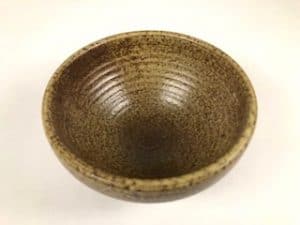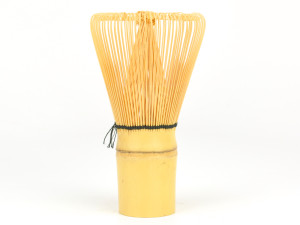What’s In this Video
We briefly cover the historical background of matcha, its qualities, and how to brew it. If you are seeking more in-depth instruction for making matcha, please visit the Brewing Guidelines section of our Shade-grown Matcha page.
A Little On Matcha
Matcha tea is finely ground or pulverized powder of processed green tea leaves. It is roundly considered better for the leaves to have been grown in shade, which is why you’ll often see this on the labels of the matcha tea you purchase. Camellia Sinensis var. sinensis produces more theanine, a consequence of growing in the shade. The growth of the tea plant is slowed down, spiking the production of theanine (and other amino acids) as well as chlorophyll. The leaves are a darker shade of green for this reason. In order for the leaves to be pliable enough to be crushed, grounded and provide a better texture for the production of matcha at the end of the process, only new growth is chosen. This is also where the plant leaves are most nutritive, having pushed the majority of its nutrition toward new growth. Leaves pulled from older growth are too coarse and produce too gritty a texture for a finished product.
Matcha can be either ceremonial grade, premium grade, or culinary grade. The easiest way to distinguish between these is by their level of bitterness. Sweeter matcha is more prized because it signals that newer growth was used to create the matcha. The preparation of matcha can either be thick, which is known as koicha, or thin, known as usucha.
A Brief History of Matcha
Tea was originally consumed by grinding or pulverizing tea leaves and adding them to heated water or by cooking them in this form. It is believed, as Keiko describes, that monks took tea to Japan sometime around the 7th century during the Tang dynasty. The ceremonial style that matcha is most known for today wasn’t adopted until a couple centuries after it arrived in Japan.
Some Quick Tips on How to Make Matcha
Typical products needed for making matcha are the following:
- Tea Whisk (chasen)
- Tea Spoon (chashaku)
- Tea Bowl (chawan)
Matcha ceremonies will also use tea caddies (natsume) and tea cloths (chakin).


To make your matcha, you’ll need no more than 5-8 ounces of water ranging in 160-170 degrees Fahrenheit, approximately 1/2 -1 tsp of matcha (1-2 grams), your whisk, and your matcha bowl. Begin by adding the matcha powder to your bowl. How thick you would prefer your matcha is up to you. Add a little bit of water to the powder-enough to wet it, and begin circling the wet matcha around the bowl to liquify it. You are welcome to wet the whisk ahead of time as Keiko points out. Continue adding water as you whisk the matcha and the water together. The idea is create a thick and frothy foamy mixture.
Tip: Create the letter “M” repeatedly to create more foam.
It is suggested that you have food with your matcha. Matcha, especially if it is not ceremonial, tends to be bitter. A sweet will offset this and balance the taste out. You should also be aware that by consuming matcha, you are consuming it in a form where the tea is releasing all the caffeine at once in a single dose, as opposed to brewing it over several infusions where the caffeine is released over a longer period of time. Your blood sugar will likely drop when you drink matcha so make sure to eat something in order to guard against this.
